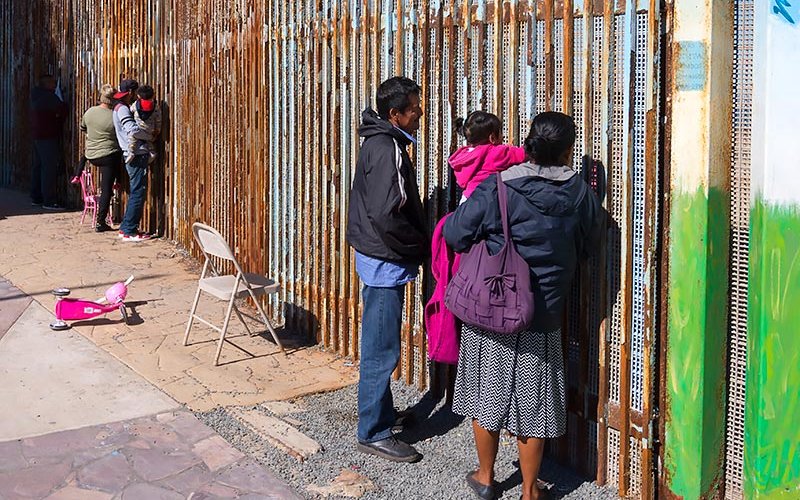
While some students will be studying immigration from books and news clippings in the fall, Cal State Fullerton communications students will be at the U.S.-Mexico border, reporting and producing the stories of the families affected.
Broadcast television veteran and lecturer Jesus Ayala will teach the Reporting About Minorities of the Southern Border class, focusing on migrant children, border militarization post 9/11 and NAFTA’s influence on border towns. The class will travel to Tijuana, report from both sides of the border and produce video segments, which could be aired nationally by CSUF partners Univision and Borderzine.com.
“I can’t think of a more timely issue for journalists to be covering than immigration at the Mexican border. Our proximity to the border makes this experience possible,” said Jason Shepard, chair and associate professor of communications. “Our students will be doing on-the-ground reporting that will bring to life the national and global issues in both politics and human experience.”
Before joining the Titan faculty last year, Ayala spent 15 years as a reporter and producer for ABC television and produced “End of the Road,” a documentary about abandoned migrant children trying to reunite with parents in the United States.
“Migrant children have been trying to enter the U.S. for decades, and people are fascinated with these children,” said Ayala, who just returned from covering the border region as a participant in the ninth annual Dow Jones News Fund Multimedia Training Academy at the University of Texas in El Paso. He was one of 12 journalism instructors selected for the program.
“Employers are really looking to hire someone to get the job done,” he said. “Our students will have an advantage, and can say they’ve already created work for professional platforms.”
Newsrooms want personable, team-oriented people who will be able to connect with the community, added Esmeralda Cisneros ’16 (B.A. communications-journalism), a reporter and multimedia journalist at KECY-TV in Yuma, Arizona. As a Titan, she had a similar experience in a brief, international reporting course that traveled to Guatemala.
“All the skills I have now I attribute to that class. I learned how to record video, edit and improve my writing. Most importantly, the course took me out of my comfort zone,” she said. “As journalists, it’s important to help society understand the complex issues happening at the southern border. We’re at a time when several voices, stories and issues need to be heard.”
The fall course is the second course in a curriculum curated by the College of Communications Latino Communications Institute aimed at developing workforce-ready, bilingual graduates. In the spring, “Al Día,” CSUF’s first Spanish-language newscast became a class, also taught by Ayala, two years after its launch.
“I’m very excited about the work that Jesus is doing to take the Spanish-bilingual, bicultural journalism curriculum to a new level at CSUF,” said Inez González, director of LCI. “The fact that Jesus gives the students the option to produce their stories in either Spanish or English is a plus. This fits perfectly with LCI‘s mission to develop U.S. Latino cultural competency so our students are more competitive in the workforce.”
Applicants must submit a story pitch for consideration, and Ayala will select 20 students for the course. The students will work in teams to produce 10 stories from the U.S. border and 10 stories from Mexico. The students’ ideas range from stories of struggling families and regional employment issues to drug wars and narcotic smuggling.
Senior Regina Yurrita plans to tell the story of families separated during the deportation process. She wants to show the living conditions of the parents, who were deported back to their country, as well as the children left behind “to live the American dream, but without the most important people by their side.
“Many immigrants cross the border to either seek asylum or simply because they strive for a better life,” she said. “Once they believe they can have one, it is unfortunate to know that parents get divided from their children.
“This class is the closest thing students have to a real-life reporting experience and the ultimate opportunity where we can go out and record the real important issues happening in the U.S.-Mexico border.”